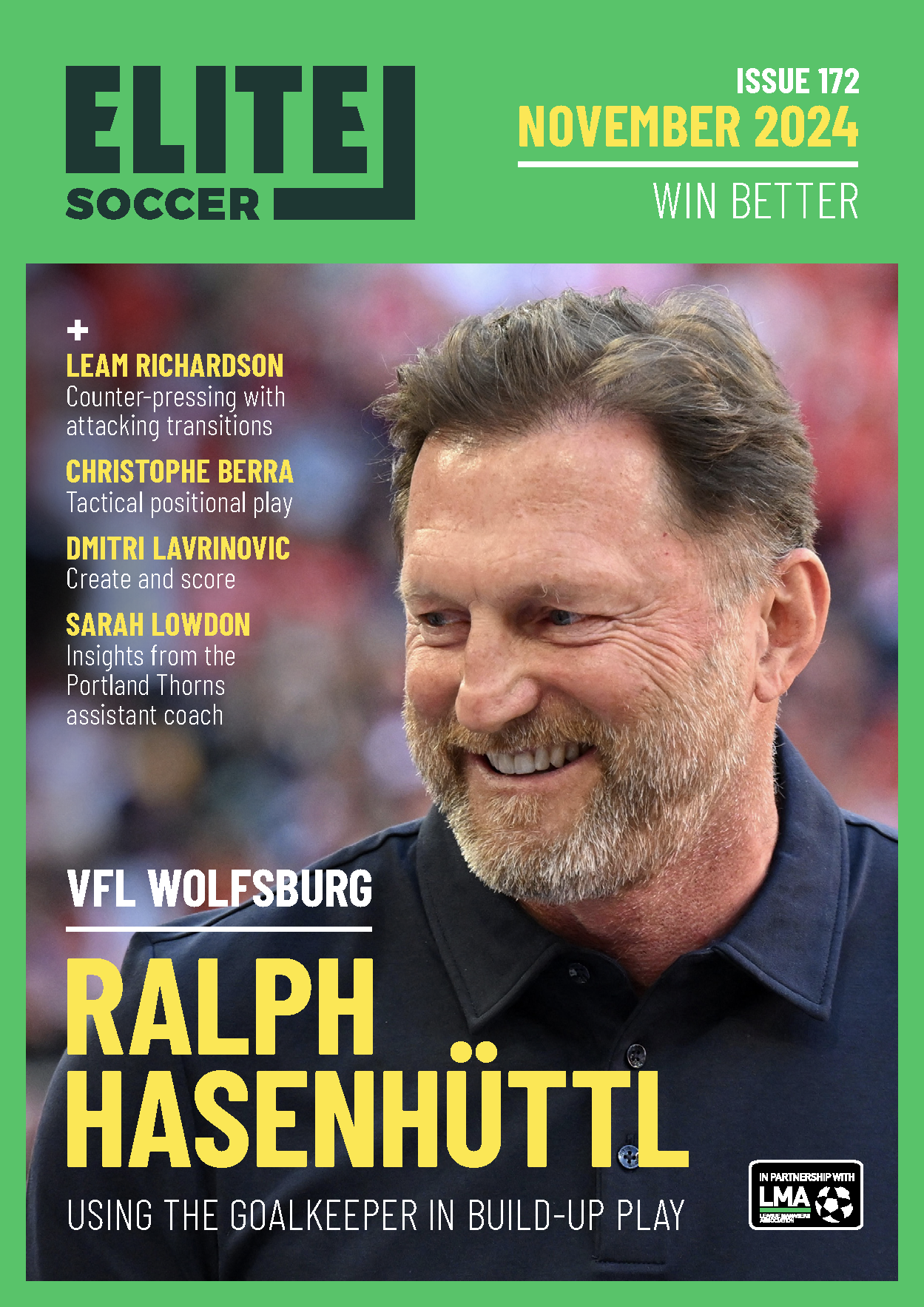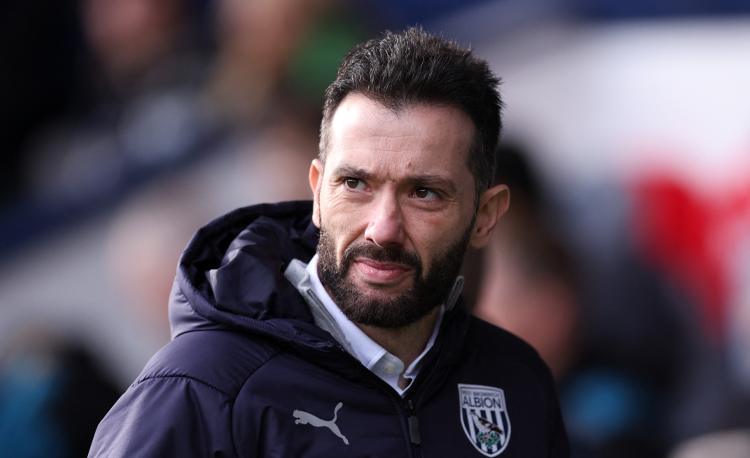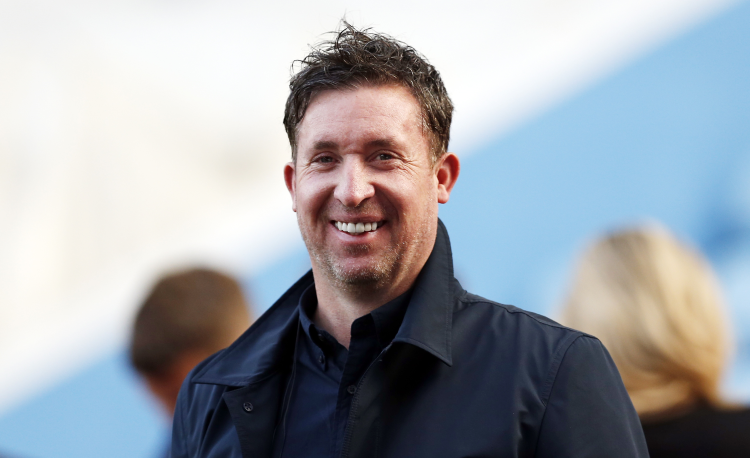You are viewing 1 of your 1 free articles
Don’t reinvent the wheel
This session is about short, sharp passing and use of possession. We use tight areas to improve players’ footwork and put demands on them to be able to work the ball with confidence, while those out of possession must close down with intensity.
| Area | Up to a full pitch |
| Equipment | Balls, cones, goals |
| No. of Players | Up to 11v11 |
| Session Time |
Two-box game 3x2 mins, Passing drill 12mins, Game situation 24mins, Counter-attack 4-4-2 12mins, 11v11 20mins |
This session is about short, sharp passing and use of possession. We use tight areas to improve players’ footwork and put demands on them to be able to work the ball with confidence, while those out of possession must close down with intensity.
We believe this session has everything players need and want. The lead-up to the tactical work (possession boxes, technical passing, games) allows them to work on all aspects of their game, while standards in possession and passing must be kept at a high level. We also ensure a competitive edge in matches by having a forfeit running for the losing team – no player wants to run after these games then go back into more training work!
We usually run this session in the early part of the week if there is no midweek game – perhaps a Tuesday morning. The tactical work at the end of the session can be tailored depending on the style of the opposition up next.What do I get the players to do?
What do I get the players to do?
Two-box game
After a 20-minute warm-up led by our sports scientist – which would include reaction sprints/SAQ (speed, agility and quickness) work – the players go straight into a possession game, as shown (1). We use 8x8-yard boxes and each man is two-touch maximum. A defender winning the ball must clear it out of the box before passing the bib to the player who lost possession, not just throw it down on the floor.. The coach will feed the next ball into the box straight away.
1
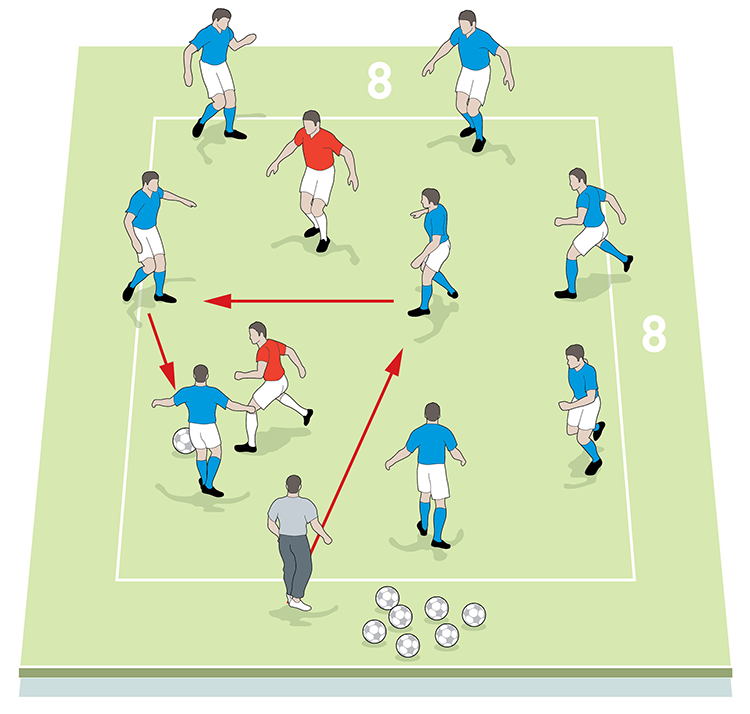
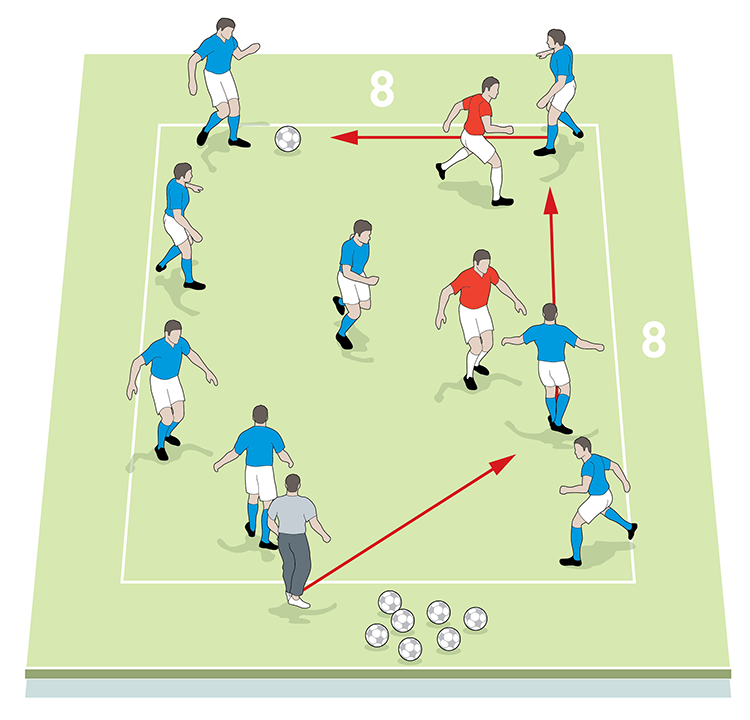
What are the key things to look out for?
All players must be on their toes ready to receive the ball. We encourage moving the ball quickly but also insist that if the ball is popping about one-touch, eventually someone has to calm the play down again by taking two touches.
The players out of possession must always close down with intensity – this is a prerequisite – and on loss of possession players must get the bib quickly.
Players who are flat-footed are not ready to receive the ball; nor are those who do not have a picture of where the next pass is going. Defending players not closing down with intensity also presents another significant disadvantage in terms of the move being played out properly.
Technical passing drill
We set this up as two mirrored drills – 10 players in each half, as shown (2a). We run it for between 90 seconds and two minutes in one direction, then change.
2a
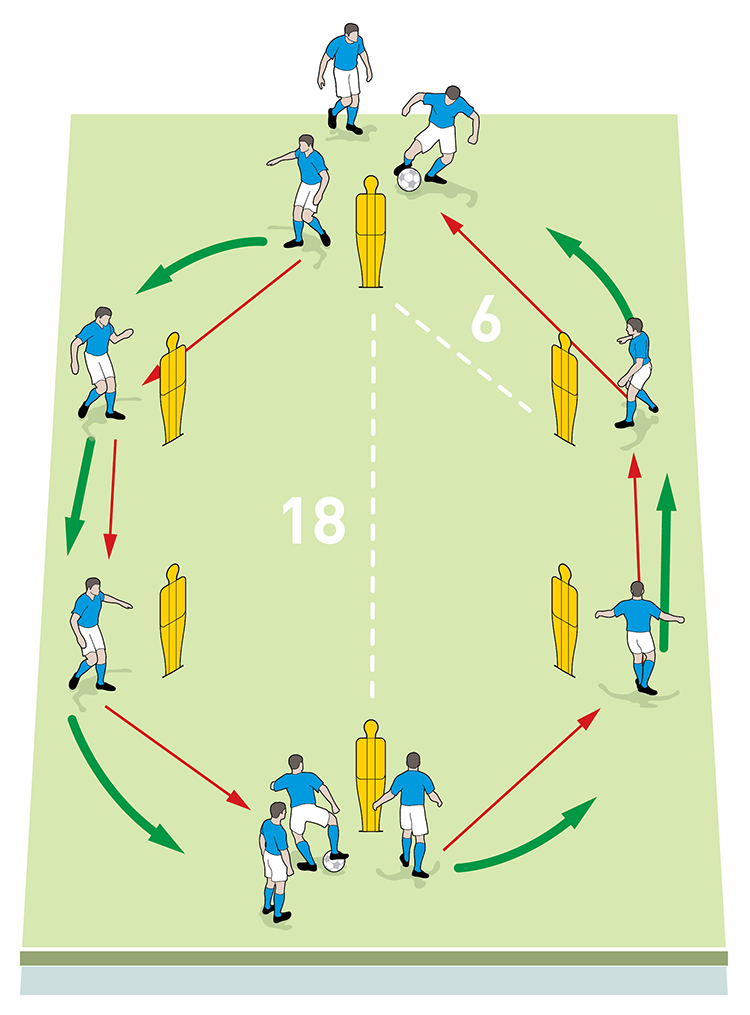
Two balls go at the same time, anti-clockwise at first, and on the coach’s shout go in the opposite direction. In the first drill the players play two- or three-touch maximum, looking to get on the half-turn at the middle mannequins. Players must touch and pass quickly, with calmness and composure required at the end mannequins.
What are the key things to look out for?
We want to see firm passes made. Players are testing their team mates’ touch, but also focusing on the weight of pass. We need to see sharp movements off the mannequins to receive the ball – going anti-clockwise players must look to pass to each others’ right foot; and clockwise, it’s each others’ left foot.
Again, we must see movement in receiving passes – players must be on the go. Pass strength must be accurate too – over- or under-weighted passes are bad – and concentration levels must be high, with players never switching off.
How do I progress the practice?
In the first progression we have two balls going, again starting at each end, but now a one-two is played at each of the middle mannequins, as shown (2b ). Passes are played as if they are being punched between the lines. We want players to be calm and composed with the pass and sets in the middle must be done with a change of tempo.
2b

In the final progression we leave two of the mannequins with no player on them, as shown (2c). Two balls start at the ends again, but this time the players receive the ball at the first mannequins on the half-turn and drive/dribble quickly at the second mannequin.
2c

They can go inside or outside before playing a pass to the end for the next player to start it off again – this is all done to encourage players to drive at defenders when they turn with the ball, and to make the most of the space that is there in front of them.
Game situation
After the players have worked on possession and passing we then put them into two teams of 4-3-3 (our preferred team shape), played out in the space between the penalty boxes, at full pitch width, as shown (3). All our principles and standards must be taken into this game.
3

We encourage keepers to play out from the back on all occasions with outfield players passing through the thirds and requesting the ball even when being pressured.
The same intensity of pressure from the defending team in the possession boxes must be taken into the game. There must be an immediate reaction to loss of possession, with the players knowing the system inside out, and every man in every position knowing his roles and responsibilities. And we’ll keep that competitive edge with the aforementioned forfeit runs.
Counter-attack against a 4-4-2
We’ll complete the session by running a full-pitch practice that focuses on tactical work, as shown (4a). It’s 8v7 in one half and 3v2 in the other. The coach feeds the ball in and the team of eight reds attacks the seven blues. We look closely at how the seven defend as four defenders and three midfielders are usually a constant in our team.
4a
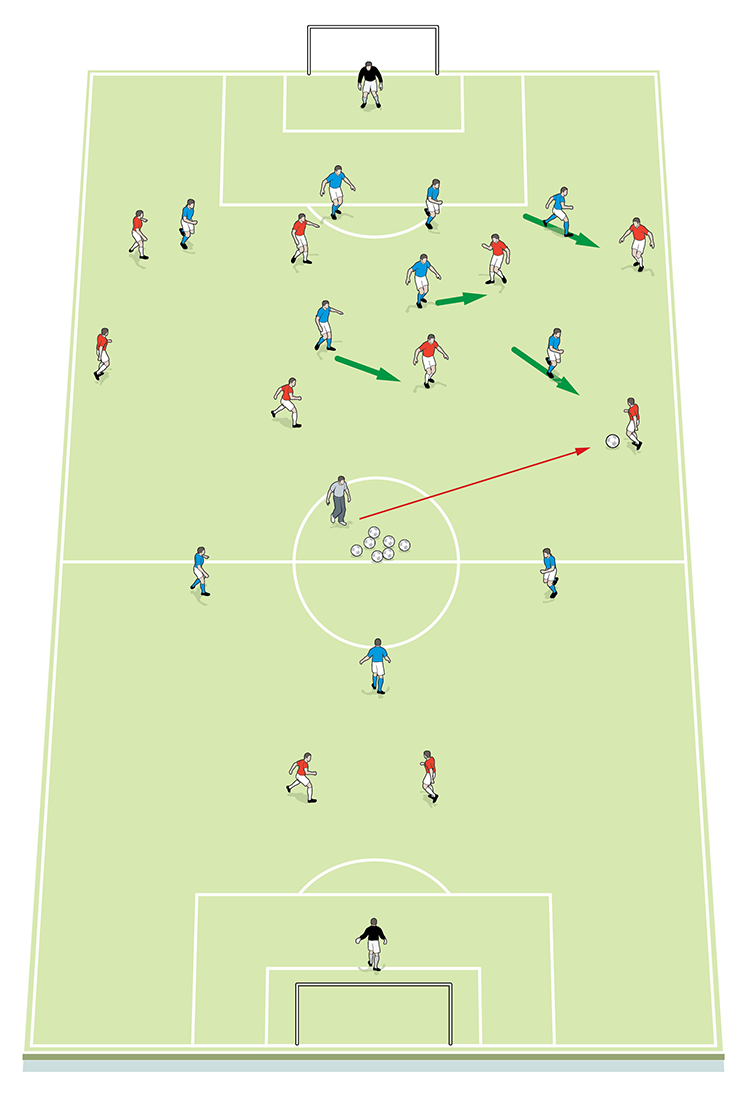
On winning possession the ball is played quickly to the front three blues who counter-attack the two red defenders (4b). If play breaks down or the ball goes out of play, a ball is played to the front three blues by the coach.
4b
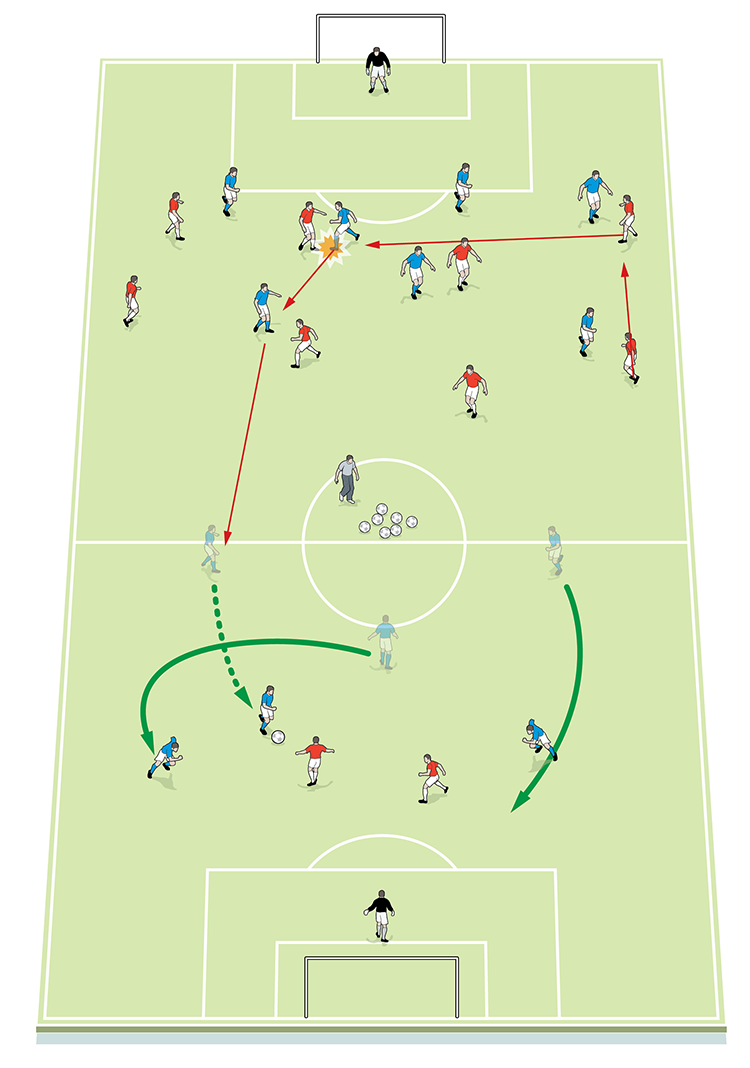
What are the key things to look out for?
What’s key here is the midfield three staying narrow and sliding across the pitch together. As the ball is played backward by the reds, the blues must squeeze the lines and get up to the level of play. Passes go forward only on winning possession and as the front three counters there must be good movement (overlaps/underlaps) with the aim always to get an effort in on goal. Indeed, we’d go so far as to say there is a demand on the forward to score goals, especially in a 3v2 overload.
We constantly work on distances between the players in relation to the ball. We also must see pace and intensity in the counter-attack and good movement from the front
three.
Related Files
Editor's Picks
Using the goalkeeper in build-up play
Pressing principles
Intensive boxes drill with goals
Penetrating the final third
Creating and finishing
My philosophy
Pressing initiation
Compact team movement
Defensive organisation
Coaches' Testimonials

Alan Pardew

Arsène Wenger

Brendan Rodgers

Carlos Carvalhal

José Mourinho

Jürgen Klopp

Pep Guardiola

Roy Hodgson

Sir Alex Ferguson

Steven Gerrard
Related
Coaches' Testimonials

Gerald Kearney, Downtown Las Vegas Soccer Club

Paul Butler, Florida, USA

Rick Shields, Springboro, USA

Tony Green, Pierrefonds Titans, Quebec, Canada
Join the world's leading coaches and managers and discover for yourself one of the best kept secrets in coaching. No other training tool on the planet is written or read by the calibre of names you’ll find in Elite Soccer.
In a recent survey 92% of subscribers said Elite Soccer makes them more confident, 89% said it makes them a more effective coach and 91% said it makes them more inspired.
Get Monthly Inspiration
All the latest techniques and approaches
Since 2010 Elite Soccer has given subscribers exclusive insight into the training ground practices of the world’s best coaches. Published in partnership with the League Managers Association we have unparalleled access to the leading lights in the English leagues, as well as a host of international managers.
Elite Soccer exclusively features sessions written by the coaches themselves. There are no observed sessions and no sessions “in the style of”, just first-hand advice delivered direct to you from the coach.



